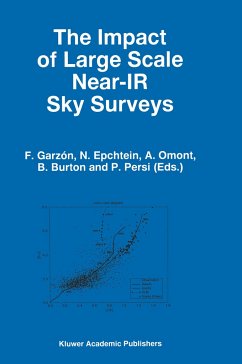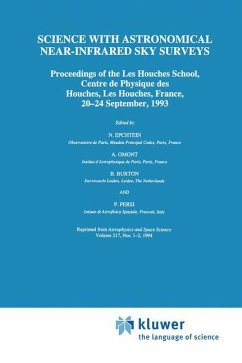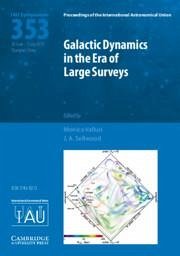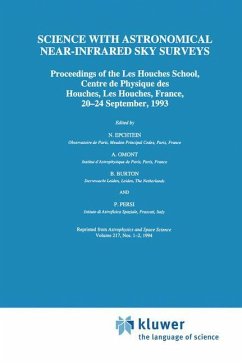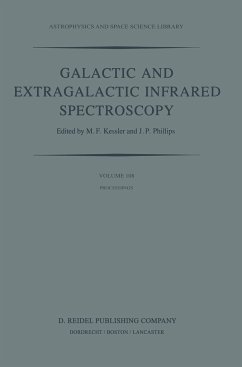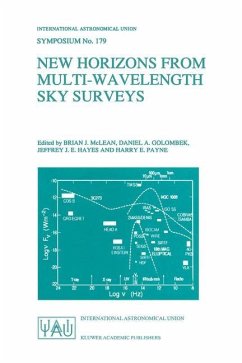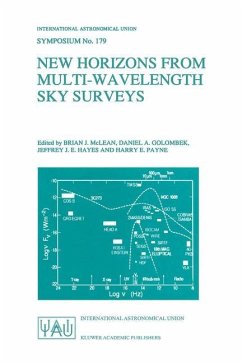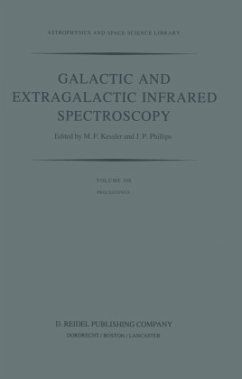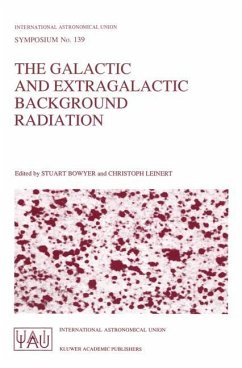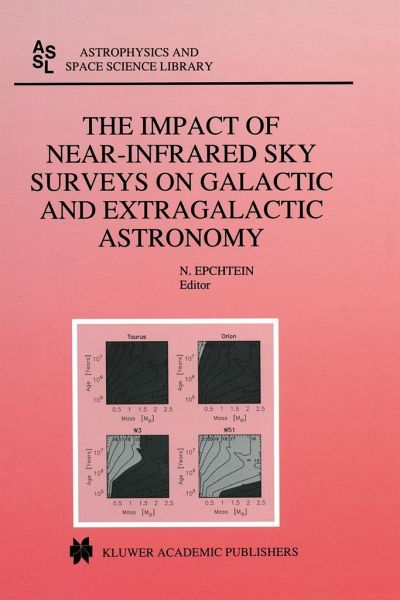
The Impact of Near-Infrared Sky Surveys on Galactic and Extragalactic Astronomy
Versandkostenfrei!
Versandfertig in 6-10 Tagen
61,99 €
inkl. MwSt.

PAYBACK Punkte
31 °P sammeln!
This book reproduces the proceedings of the last of a series of EUROCONFERENCE dedicated to the on-going near-infrared sky surveys DENIS and 2MASS. It presents the current status of both projects and some of the most outstanding results they have recently achieved in various areas of galactic and extragalactic astronomy. A first analysis of the relevant results of the space mission MSX is also presented. The book contains substantial articles by researchers directly involved in the survey data processing and interpretation that thoroughly describe the astrophysical context in which deep and ho...
This book reproduces the proceedings of the last of a series of EUROCONFERENCE dedicated to the on-going near-infrared sky surveys DENIS and 2MASS. It presents the current status of both projects and some of the most outstanding results they have recently achieved in various areas of galactic and extragalactic astronomy. A first analysis of the relevant results of the space mission MSX is also presented.
The book contains substantial articles by researchers directly involved in the survey data processing and interpretation that thoroughly describe the astrophysical context in which deep and homogeneous near-infrared surveys will eventually bring about significant breakthrough. They deal with the determination of basic parameters of the galactic structure, the stellar content of the bulge, the construction of unbiased and statistically significant samples of isolated very low mass stars and brown dwarfs, the improvement of the low-end of the stellar luminosity and mass functions, the complete census of young stellar objects in nearby giant molecular clouds, the accurate determination of the luminosity function of late-type giants in the Magellanic Clouds and the structure of the local universe. The analysis of a very small subsample of the full expected set of data promises an extraordinary harvest of discoveries in the next few years especially when these data are merged with the results of major related space missions such as Hipparcos and ISO.
Audience: This book is of general interest for graduate students in astronomy and professional astronomers involved in most areas of observational astronomy.
The book contains substantial articles by researchers directly involved in the survey data processing and interpretation that thoroughly describe the astrophysical context in which deep and homogeneous near-infrared surveys will eventually bring about significant breakthrough. They deal with the determination of basic parameters of the galactic structure, the stellar content of the bulge, the construction of unbiased and statistically significant samples of isolated very low mass stars and brown dwarfs, the improvement of the low-end of the stellar luminosity and mass functions, the complete census of young stellar objects in nearby giant molecular clouds, the accurate determination of the luminosity function of late-type giants in the Magellanic Clouds and the structure of the local universe. The analysis of a very small subsample of the full expected set of data promises an extraordinary harvest of discoveries in the next few years especially when these data are merged with the results of major related space missions such as Hipparcos and ISO.
Audience: This book is of general interest for graduate students in astronomy and professional astronomers involved in most areas of observational astronomy.



